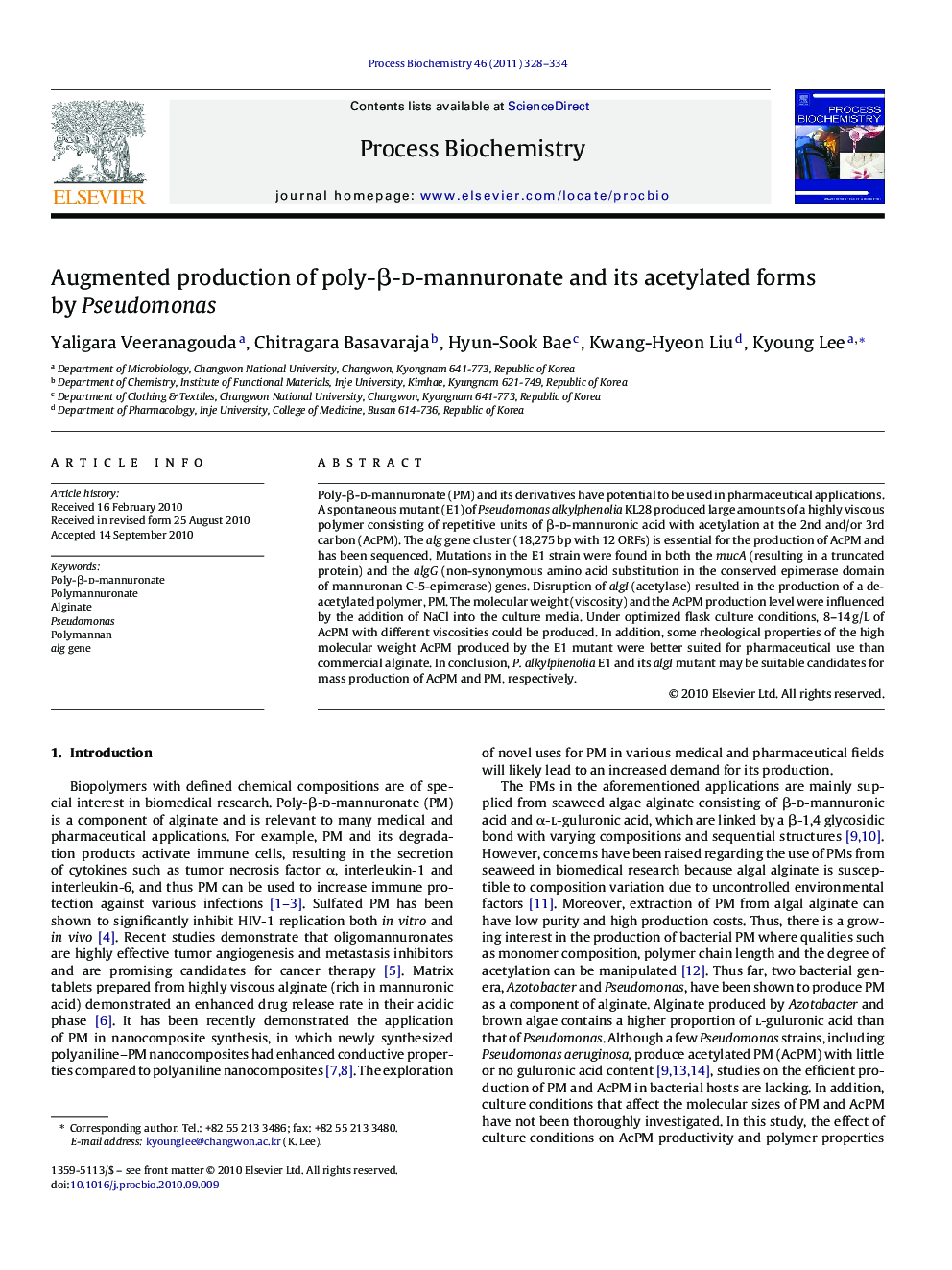| Article ID | Journal | Published Year | Pages | File Type |
|---|---|---|---|---|
| 35394 | Process Biochemistry | 2011 | 7 Pages |
Poly-β-d-mannuronate (PM) and its derivatives have potential to be used in pharmaceutical applications. A spontaneous mutant (E1) of Pseudomonas alkylphenolia KL28 produced large amounts of a highly viscous polymer consisting of repetitive units of β-d-mannuronic acid with acetylation at the 2nd and/or 3rd carbon (AcPM). The alg gene cluster (18,275 bp with 12 ORFs) is essential for the production of AcPM and has been sequenced. Mutations in the E1 strain were found in both the mucA (resulting in a truncated protein) and the algG (non-synonymous amino acid substitution in the conserved epimerase domain of mannuronan C-5-epimerase) genes. Disruption of algI (acetylase) resulted in the production of a de-acetylated polymer, PM. The molecular weight (viscosity) and the AcPM production level were influenced by the addition of NaCl into the culture media. Under optimized flask culture conditions, 8–14 g/L of AcPM with different viscosities could be produced. In addition, some rheological properties of the high molecular weight AcPM produced by the E1 mutant were better suited for pharmaceutical use than commercial alginate. In conclusion, P. alkylphenolia E1 and its algI mutant may be suitable candidates for mass production of AcPM and PM, respectively.
